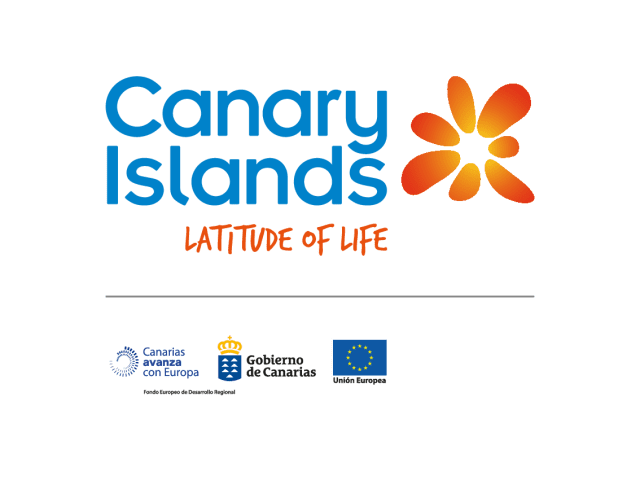Millions of years have passed to make the Canary Islands as they are today: eight volcanic islands that slowly emerged from the bottom of the Atlantic Ocean, to be one of the most biodiverse places in the world.
Boasting imposing volcanoes, dramatic cliffs, lush forests and beautiful beaches, the volcanic origin of the Canary Islands has given the archipelago a varied and beautiful landscape.
Read on to uncover some of the best volcanic landscapes of the Canary Islands…
La Restinga, El Hierro
Declared a World Biosphere Reserve, the island of El Hierro is dominated by lava fields and volcanoes. The Marine Reserve of La Restinga, El Hierro, is an internationally acclaimed diving sanctuary, home to numerous marine species, including turtles, stingrays, dolphins, barracudas… and the occasional peaceful whale shark.
The volcanic eruption that took place in 2011 led to a regeneration of the seabed, giving rise to a very particular biodiversity and a unique underwater landscape that is full of life, making it the perfect destination all varieties of diving. Given its volcanic origins and small insular shelf, divers can reach depths of up to 300 metres just a few miles off the coast and enjoy visibility of up to 50 metres.
Mount Teide, Tenerife
At 3,718 meters high, Tenerife’s Mount Teide is the highest mountain in Spain and the third highest volcano in the world.
Calling all hikers! The diversity of Teide’s ecosystem makes the ascent up this mountain an experience to remember. Opt for a guided tour to the top or make your own way to the summit. Access is free, and there’s a shelter at 3,270 meters where guests can stay for a maximum of one night – the perfect option for those who want to catch unforgettable sunrise views.
Caldera de Taburiente, La Palma
Found on La Isla Bonita, the Beautiful Island, La Palma, the Caldera de Taburiente National Park in the centre of La Palma is the number one attraction of the island. Named after the world’s biggest volcanic crater located in the centre of the island, the Caldera de Taburiente, the park is a UNESCO Biosphere Reserve.
Photos do not do this site justice. Boasting an eight-kilometre-wide cleft, reaching depths of up to one and a half kilometres, the crater contains a unique ecosystem, producing lush vegetation in the lower part of the National Park. This volcanic oasis, where leafy forests add to the impressive views of the island’s summits, is a must-visit on your trip to La Palma.
Los Órganos, La Gomera
Los Organos is one of the most iconic natural landforms associated with the island of La Gomera. The impressive cliff was formed by the cooling and subsequent erosion of ancient volcanic rocks, forming a silhouette of organ pipes that fall vertically into the ocean.
Visitors can experience this incredible landform up close and personal with a private boat excursion from the tourist hubs in Valle Gran Rey and Playa de Santiago. Tour guides will explain the formation of the ‘organs’, that they are really a mass of magma that didn’t quite make it above the surface and cooled very quickly, breaking up into regular shapes. La Gomera’s fierce northern waves then took over and shaped and sculpted the rock face into the amazing, unique sight that it is today.
Bandama Caldera, Gran Canaria
The Bandama Caldera is one of the most unique natural landscapes in Gran Canaria, located just a short distance from the island’s capital, Las Palmas. This impressive crater was created by a volcanic eruption between 4,000 – 5,000 years ago and is home to an abundance of unique flora and fauna.
The two-kilometre route around the Caldera is one of the only trails in the world that allows walkers to do a lap of a volcano that’s still, in geological terms, hot to the touch. The Caldera is one kilometre wide and over 200 meters deep, making it one of the world’s largest complete calderas. From high up on the rim, the views of the steep walls and dozens of palm trees that grow on the crater floor are truly spectacular.
Timanfaya, Lanzarote
If not for the beautiful blue sky, many photos taken in Lanzarote could be mistaken for landscapes from Mars. Neither the vegetation nor the climate has changed the pure beauty of this red and black volcanic landscape, part of the UNESCO Network of Biosphere Reserves.
There are several routes around Timanfaya National Park, offering wonderful views of the dramatic volcanic landscape. Be sure to hike around the base of the striking red Montaña Colorada to enjoy stunning views of the National Park or enter the crater of the Volcán del Cuervo by foot to spot rare Berbery Falcons.
Montaña Colorada, Bayuyo, Fuerteventura
Located on the same tectonic plate as Lanzarote, Fuerteventura is best known for its arid landscape, the result of erosion, and large dunes that hide the volcanic treasure that formed its origin thousands of years ago.
Fuerteventura’s Montaña Colorada, Bayuyo, may be only five kilometres in length but is home to several perfectly aligned volcanoes formed roughly 50,000 years ago.
Visitors can explore the area on foot, or by car, through a path formed by boilers and small volcanoes, known as “hornitos“, where lava erupted in large quantities, giving rise to the famous lava field, Malpaís Grande.
IMAGES: https://www.dropbox.com/sh/ha5kspg9kh1wrxr/AABs2fAyww-R3ZljqM0mVSu9a?dl=0
For more information, please visit www.hellocanaryislands.com
ENDS
For more information on the Canary Islands please contact Ali Finnegan ali@travelmedia.ie

